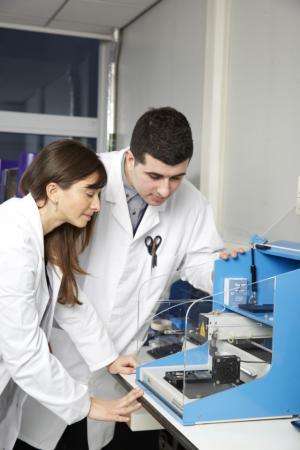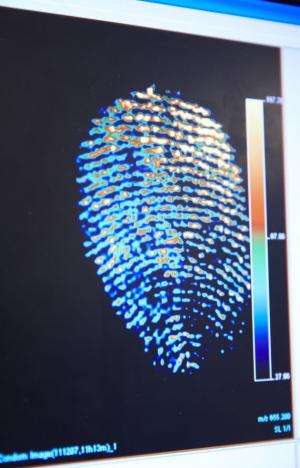Innovative fingerprint analysis is trialled by police

Pioneering technology designed by Sheffield Hallam University to provide an in-depth analysis of fingerprints is being tried and tested at crime scenes.
The technology, known as Matrix Assisted Laser Desorption Ionisation Mass Spectrometry Imaging (MALDI-MSI) has been developed by researchers at the University's Biomedical Research Centre (BMRC) who have been working with West Yorkshire Police to trial the technology on fingermarks left at scenes of crime.
The team, led by Dr Simona Francese have been lifting marks from crimes and taking them back to the University's laboratories to test for traces of drugs, hair and cleaning products and condom lubricants as well as other substances of forensic interest that will provide crime investigators with crucial background information about a criminal's activities prior to committing a crime.
In laboratory settings the technology has proven that it may be used to determine the sex of the criminal and has been shown to be compatible with current procedures undertaken by crime investigators across the country.
Further access has been granted to crime scenes to allow the team to develop the technology to become more forensically viable and following Home Office funding in 2011 for further development, it has been deemed to have the potential to be adopted into standard forensic investigation policies.

MALDI-MSI, which is a powerful technology normally used to map different molecules within tissue sections, produces multiple images of fingermarks which are made up of materials from the surface of the skin and from gland secretions.
Conventionally, fingermarks found at the scene of a crime are lifted after using a powder to enhance them, and are then compared with prints on a police database to identify a suspect.
The research team also discovered that the cooking spice, turmeric can be used as the powder to lift fingermarks within the MALDI-MSI process.
Dr Francese said: "Our collaboration with West Yorkshire Police takes us one step closer to our aim of getting MALDI-MSI integrated into standard forensic procedures at scenes of crime up and down the country.
"It is a valuable opportunity to be able to gather authentic evidence that demonstrates the efficiency of MALDI-MSI to be used in order to provide additional intelligence to the investigators in real casework."
West Yorkshire Police's Regional Head of Identification Services, Neil Denison said: "This research presents an exciting opportunity to enhance fingerprint capability beyond just identification.We may soon be able to accurately age fingermarks and by analysing the constituent parts of the finger impression, profile the habits of the offender."
Provided by Sheffield Hallam University



















